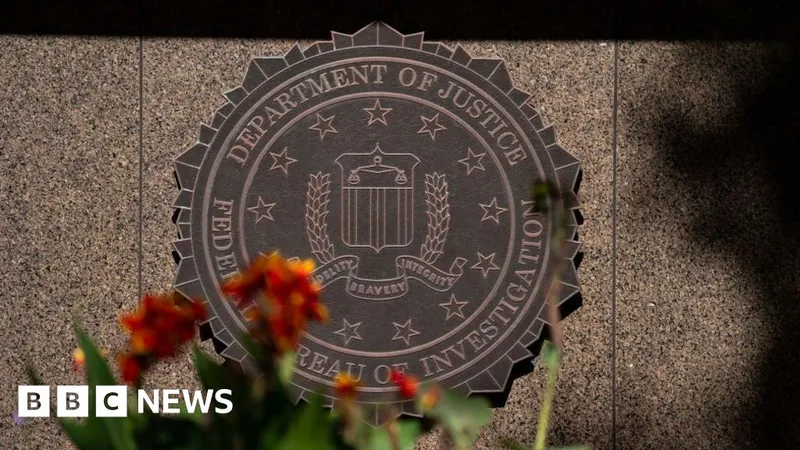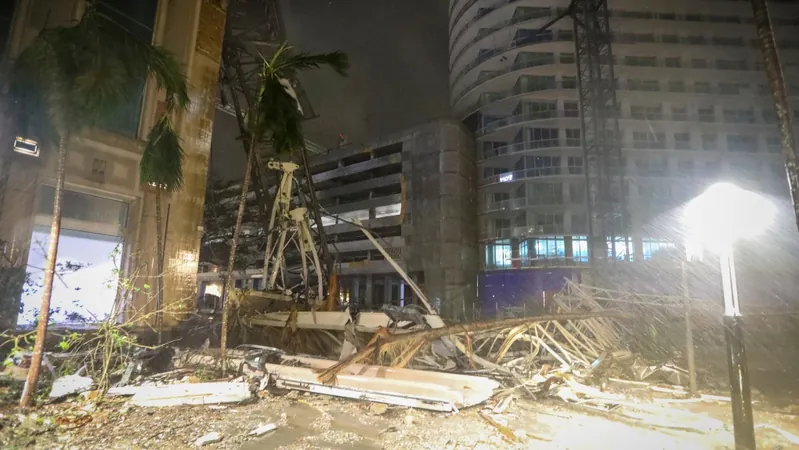
15 Years After Historic Moon Crash, Scientists Finally Discover Impact Site!
2024-10-09
Author: Benjamin
Introduction
In a groundbreaking revelation, scientists have pinpointed the location of a lunar crater created during a significant NASA experiment 15 years ago. Back in 2009, NASA orchestrated a bold plan by deliberately crashing the Lunar Crater Observation and Sensing Satellite (LCROSS) into the moon. This intense collision aimed to uncover hidden resources by ejecting lunar material, enabling researchers to examine potential frozen water and other volatile compounds buried in the lunar surface.
The LCROSS Mission
The LCROSS mission sought to detect volatiles, substances that can easily shift from liquid to gas. As a result of its impact, a cloud of lunar regolith was unleashed, revealing an astonishing 5.6% water content by mass, alongside trace amounts of carbon dioxide, sulfur dioxide, methane, and ammonia. However, the impact occurred in a permanently shadowed region of the moon, resulting in a challenge for scientists attempting to study the crater directly.
The Discovery
After years of painstaking research, a team led by Dr. Fassett announced that they have finally located the LCROSS impact crater. Their findings, published in the esteemed journal Geophysical Research Letters, enhance our understanding of the mission and set the stage for future lunar explorations.
Technology Used
To achieve this feat, the research team utilized two advanced data sources: the Miniature Radio Frequency instrument aboard the Lunar Reconnaissance Orbiter (LRO) and the ShadowCam from the Korea Pathfinder Lunar Orbiter, launched in 2022. The LRO provided valuable insights by studying the moon’s surface at radar wavelengths, while the ShadowCam—designed to penetrate eternally dark areas—enabled the researchers to directly observe the crater. This combination of technology confirmed that certain changes detected by LRO in radar reflectivity were indeed linked to the newly identified crater.
Crater Characteristics
Measuring approximately 22 meters across—slightly smaller than initial predictions—the LCROSS impact crater has offered newfound insights into the lunar surface's age and composition. The research indicates that the volatiles ejected from the crater were likely disturbed between 100 and 500 million years ago. Notably, the crater itself has been in permanent shadow for nearly 900 million years, positioning it as a relatively young feature in lunar history.
Implications of the Findings
This research aligns with earlier hypotheses suggesting that the volatiles discovered might have originated from external sources, like comets or asteroids, rather than being remnants of volcanic activity from the moon's early stages. The findings have profound implications for our understanding of the origins and distribution of water on the moon.
Future Missions
As humanity prepares for future lunar missions, including the highly anticipated Volatiles Investigating Polar Exploration Rover (VIPER), these revelations are crucial. They not only expand our knowledge of the moon but also inform potential resource utilization strategies that could pave the way for sustained human presence on our celestial neighbor. Are we on the brink of a lunar water revolution? Stay tuned for more updates!









 Brasil (PT)
Brasil (PT)
 Canada (EN)
Canada (EN)
 Chile (ES)
Chile (ES)
 España (ES)
España (ES)
 France (FR)
France (FR)
 Hong Kong (EN)
Hong Kong (EN)
 Italia (IT)
Italia (IT)
 日本 (JA)
日本 (JA)
 Magyarország (HU)
Magyarország (HU)
 Norge (NO)
Norge (NO)
 Polska (PL)
Polska (PL)
 Schweiz (DE)
Schweiz (DE)
 Singapore (EN)
Singapore (EN)
 Sverige (SV)
Sverige (SV)
 Suomi (FI)
Suomi (FI)
 Türkiye (TR)
Türkiye (TR)